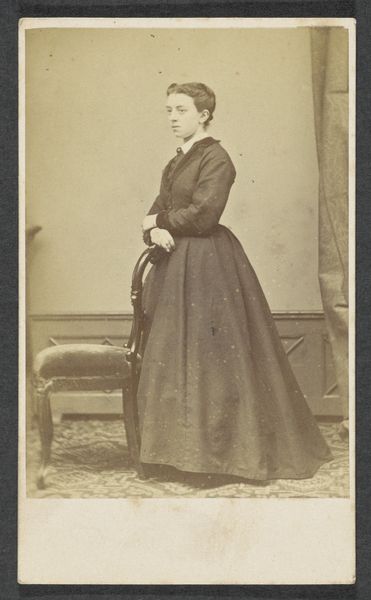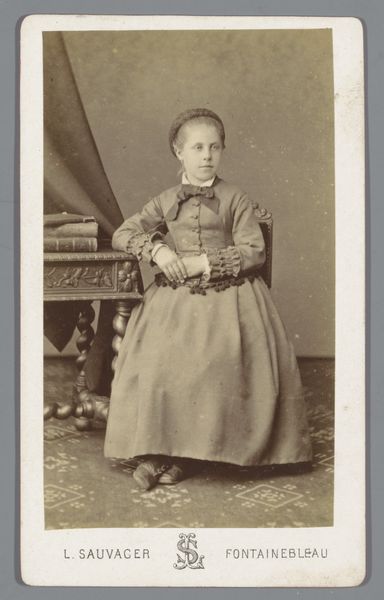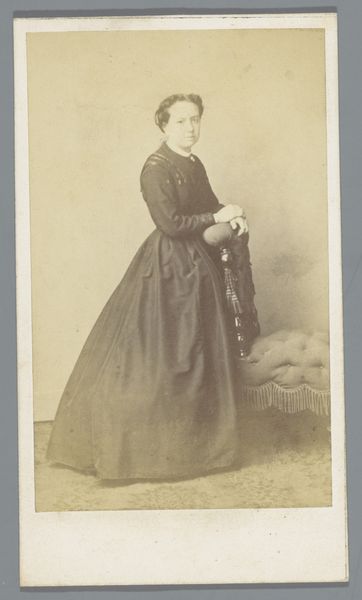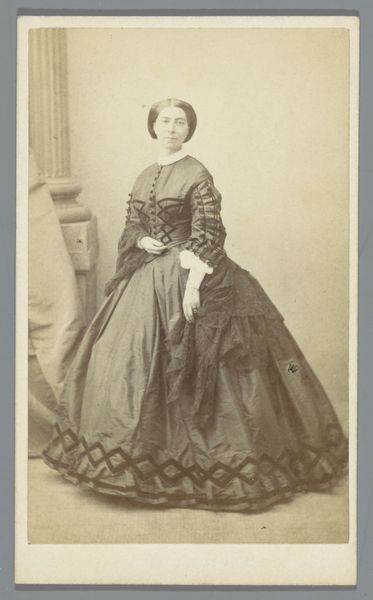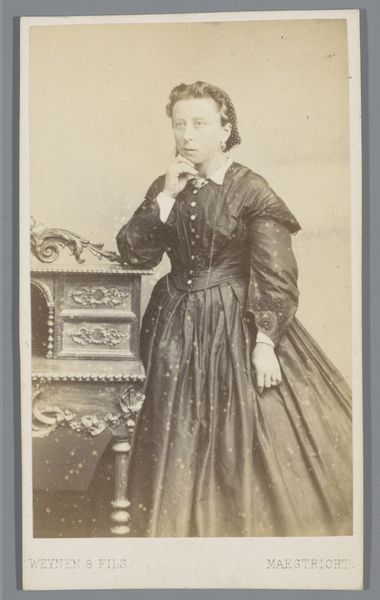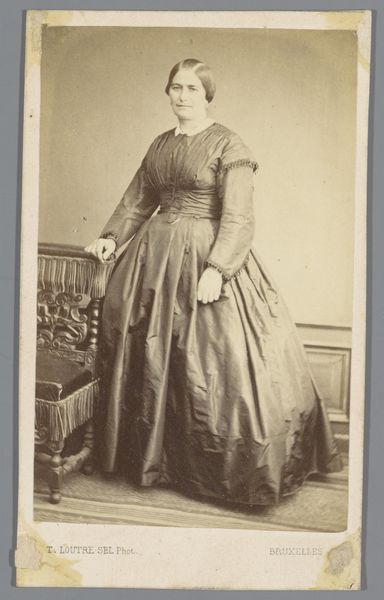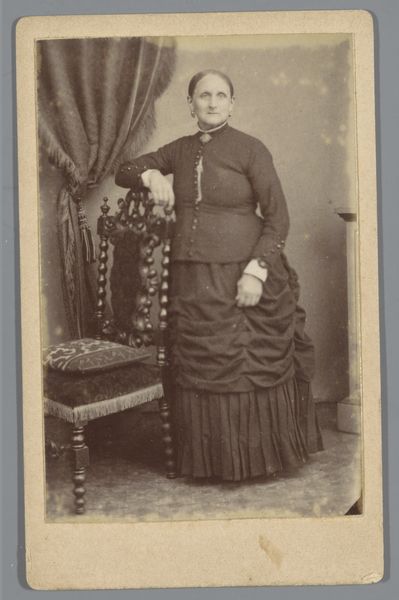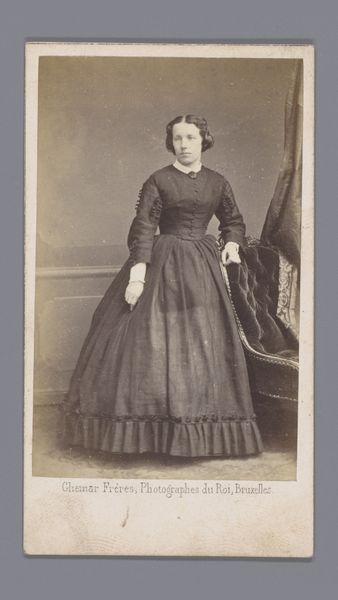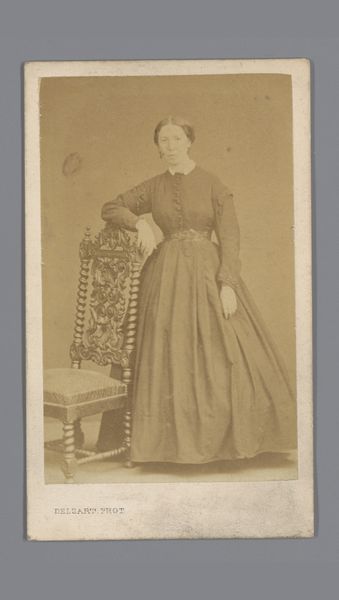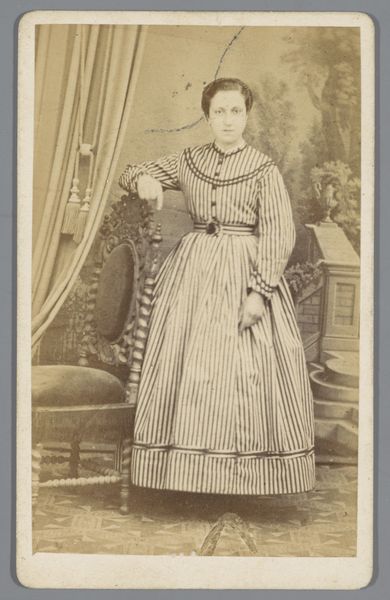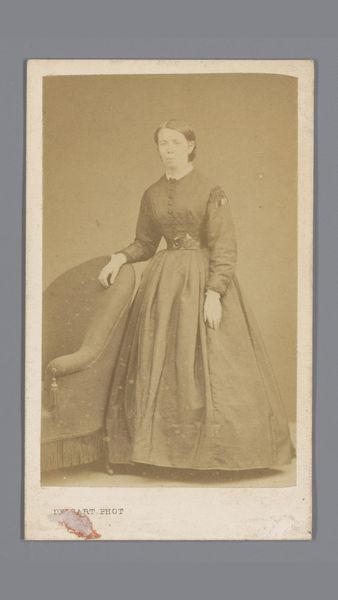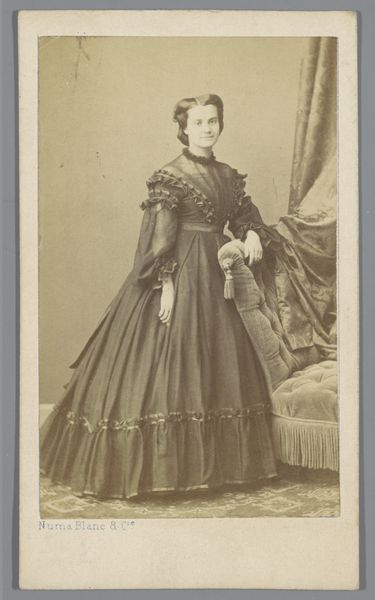
paper, photography, gelatin-silver-print
#
portrait
#
paper
#
photography
#
historical fashion
#
gelatin-silver-print
#
paper medium
Dimensions: height 105 mm, width 62 mm
Copyright: Rijks Museum: Open Domain
Curator: This is a striking gelatin-silver print, a "Portrait of an Unknown Woman," by photographer Ch. Kusian. It was created sometime between 1855 and 1885, offering us a glimpse into the material culture of the time. Editor: My immediate impression is one of restrained elegance mixed with… melancholy? Her posture, leaning slightly on the ornate chair, suggests composure, but her eyes hold a certain pensiveness. Curator: It's fascinating to consider the context in which this photograph was made. The gelatin-silver process, which really took hold in the late 19th century, democratized photography to a degree. Producing paper prints became faster and easier. It offered an affordable means for capturing likeness and social status. Editor: Exactly! Portraiture wasn't just for the elite anymore. This woman's clothing is telling, too – that horizontally striped dress, the style of the sleeves – it all speaks to the fashions of the mid-to-late Victorian era, and her presentation signals the growing importance of photography for self-representation within the rising middle class. Curator: The choice of materials is important to remember. The paper base influences the final tone and texture, acting as both support and subtle element in the work. The controlled tones give the image a tactile sense; the materials aren't just neutral substrates, but intrinsic to the overall feeling. Editor: Right, it prompts us to ask: who was this woman, and what story did she want to project? What were the power dynamics at play between her and the photographer? Were photographs like this a source of liberation or simply a new kind of social performance? There’s a tension between individuality and conformity in her gaze. Curator: Looking closely at the composition—the curtain draped in the background, the plush chair—these carefully chosen elements provide insight into the staging process. I imagine Kusian deliberately created a desirable aesthetic and photographic commodity to make a living for themselves. Editor: Ultimately, this "Portrait of an Unknown Woman" gives us so much more than just her image. It holds all of the cultural nuances of gender roles and the changing social landscape of photography and identity in a time that, I think, becomes knowable again, through viewing it. Curator: Precisely, it highlights photography as an intricate layering of materials, techniques, and a very complex economy. A great convergence.
Comments
No comments
Be the first to comment and join the conversation on the ultimate creative platform.

